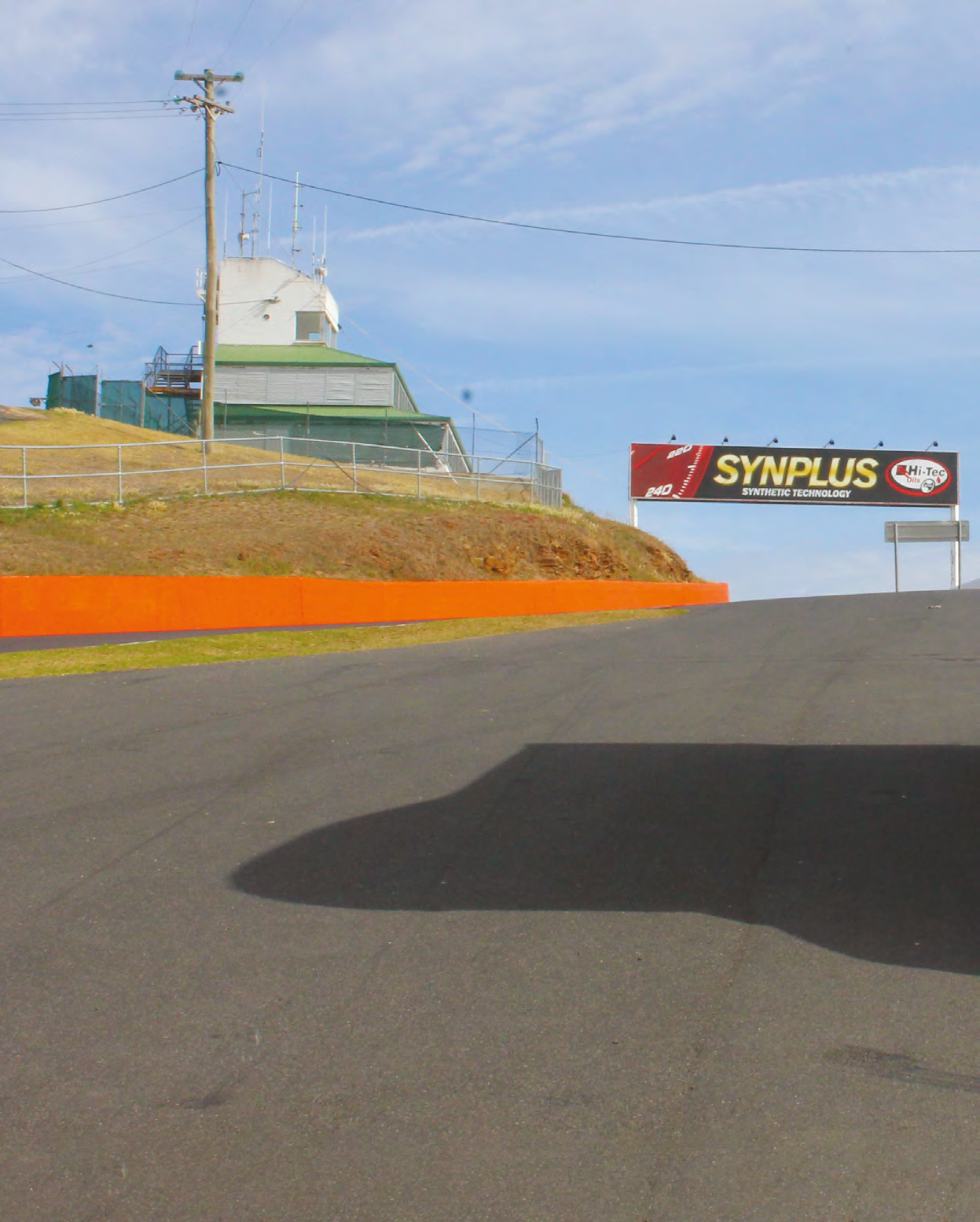
At the risk of stating the obvious, buying a motorhome is an expensive proposition. With many new models costing well north of $150,000 – and many used variants not offering much change from even $120k or so – they are simply out of reach for a great number of people.
The used market is certainly awash with vehicles from expedition-ready rigs to ex-backpacker whizz-bangs and while prices can seem reasonable in some cases, as with any used vehicle there are many that waft of yellow citrus fruit to be wary of. And it seems that the motorhome market is definitely an arena where prices can be inflated based on the fact that owners have spent years and $1000s installing the fit out or accessories and sometimes unrealistically expect that value to be reflected in resale prices. And that doesn’t factor in the sentimentality owners attach to their pride and joy. Only a proportion of the aftermarket cost can be passed on to the next owner. And finally, whereas often you will have some form of warranty from a dealer, you will have none from a private sale. Caveat emptor.
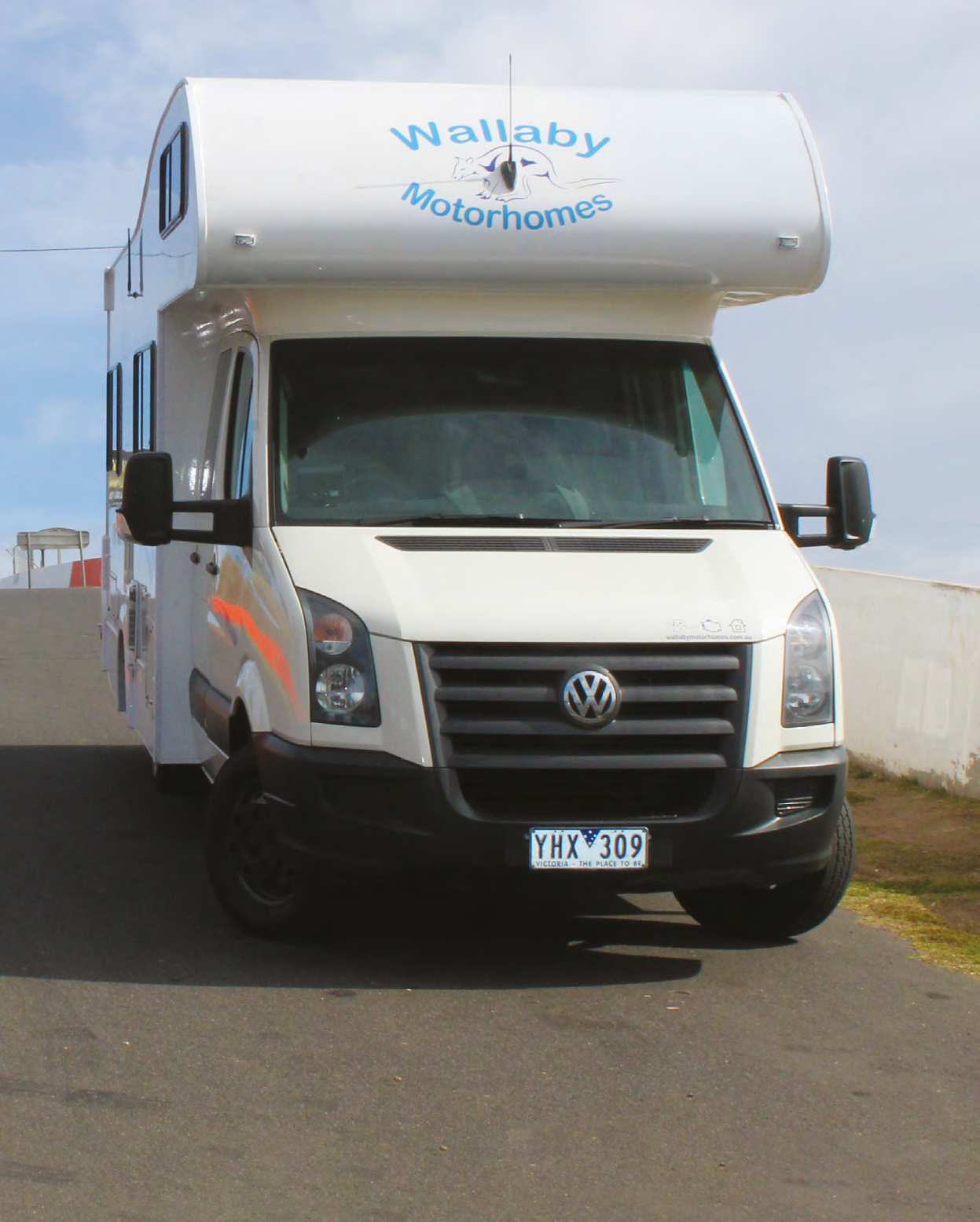
Wallaby Motorhomes, in the Sydney suburb of Granville, is the outlet for ex-rental campers and motorhomes from tourism giant Maui. This 2010 model VW Crafter-based Renegade is the second model we have tested in the last six months, the first being a Sprinter 2+1 campervan conversion in the January issue.
The Renegade is at the other end of the accommodation spectrum. And while possibly overkill for a single occupant (me) it was palatial for my excursion to the recent Bathurst rally.
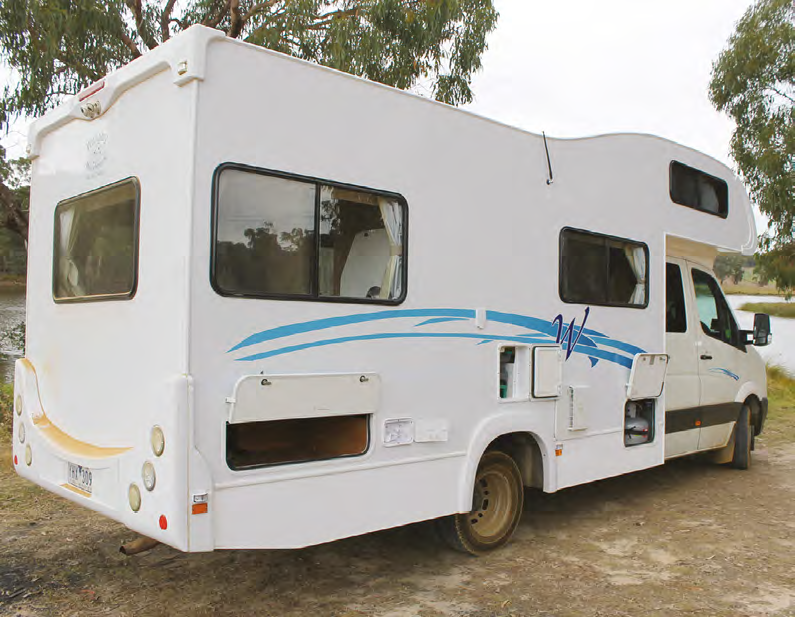
Firstly, the Crafter cab in this guise is a double and there’s no throughway to the liveable area in the conversion. It seats six, and that’s the berth too. This arrangement won’t suit everyone but it will suit families and those travelling in larger groups to be seated together that often a traditional motorhome doesn’t facilitate – or there are more seatbelts than beds. Remember its hire background and the Renegade starts to make sense. And it’s perfectly suited to travelling with pets.
The cab is spacious, with four head-rested pews on the bench rear seat with lap-sash belts for the outer two occupants.
The seat base lifts to provide storage and a lockable safe for valuables. The side windows on the rears doors latch open as opposed to wind down, which is a nod to commercial origins at VW but a safety feature with kids back here too. There are two 12V accessory sockets on the frame of the driver’s seat base to make sure that rear passengers can be metaphorically plugged in and charged. Cabin flooring is vinyl throughout.
The dash is the Germanic commercial standard of grey-black; functional over stylish but there’s nothing wrong with that. There isn’t a satnav system in this vehicle and no USB ports in the media set-up, which still has a CD player (yay) and no phone Bluetooth (nay). I found the seat to be comfortable and adjustable but there are no arm rests for long distance touring comfort.
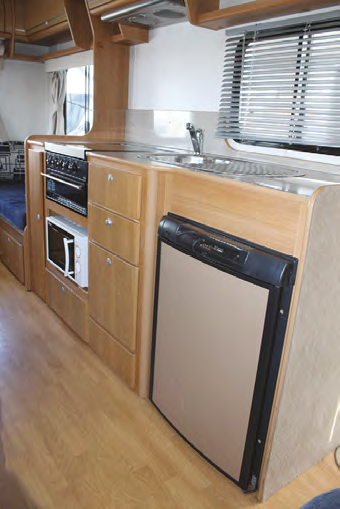
The VW powerplant is a 2.5-litre turbodiesel that outputs a modest 100kW at 3500rpm and a peak torque of 330Nm at 2000rpm. They’re not startling numbers and neither is performance in a vehicle weighing what’s going to be close to its 4490kg GVM anytime it hits the road in earnest. With a manual mode in the six-speed auto you can row the box if you feel the need and while I did more than I have done in any test vehicle it wasn’t that the performance has you cursing for want of power, but a little extra grunt wouldn’t hurt. Open road touring conditions are pleasant enough, and that’s what most buyers expect. Remote central locking secures the cab but doesn’t extend to the motorhome for obvious reasons.
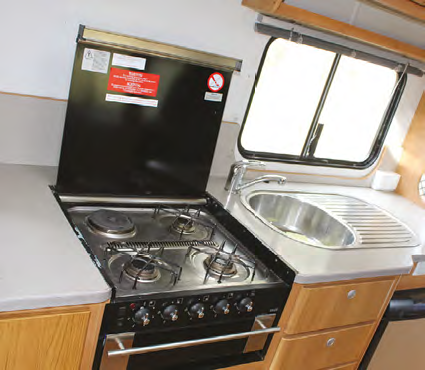
With such a large Luton, in depth, and height, the Renegade is prominent from the front three-quarter profi le. The bed up there extends across the whole dual cab so it’s a big double or two very generous singles. It has 62cm of headroom and LED downlights, reading lights and window’s either side so it’s not the often claustrophobic ambience of Luton bedrooms.
Entry to the motorhome is via a windowed two-stage door that can be split to leave a lockable screen door in place. The electric fold-down step is activated from just inside on the left. Look up as you go in and you’ll see the pull-down awning that’s a simple unit to operate.
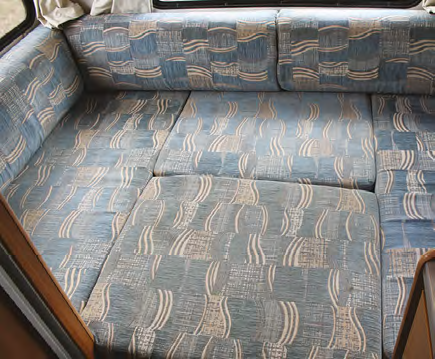
Once inside the headroom is very generous given the height that the roof line climbs to. Immediately in front of you is the first of two lounges, with a large window behind in the offside wall and provision for a table setting. The table top slots against the wall to your left following a vertical cupboard unit and behind where the ladder to the Luton bedroom fixes to the wall. There is a large drawer in the leading edge of the shorter arm of the L-shape setting, while the rest of the under-seat storage is taken up with the electrical system (see breakout, page 43). Above the window are three over head lockers that form part of a complete circuit around the interior in various sizes all in attractive timber, except for where broken by the bathroom placement – 13 in all! The right-hand one in this section lifts to reveal the switches and gauges keeping tabs on the hot water, pump and tanks and the radio/CD player for the ‘house’ sits beneath this collection – there are also speakers on the outside wall.
The bathroom forms a substantial structure, mirrored on the one panel outside, beyond the door its tile-effect lining looks domestic. The chrome-finished and chunky shower unit has an integral soap tray, variable height hose and a chrome lift-out mixer tap. Opposite, the toilet has a basin above it of the type that folds up, and there’s a vanity mirror on the wall but no cupboard space. A drying rail folds down from the roof just beside the wind-up roof vent with powered fan.
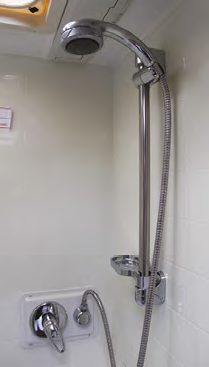
The rear lounge has a larger table setup than the front, but both are shaped to allow easier access to the benches when in place. To convert this layout to a double bed you simply drop the table top (stowed against the shower wall) between the side seats and place a large cushion on top. The forward, or middle, bed is deployed by sliding out a frame that is cleverly stowed under the seat and placing another cushion lengthways. Everyone has nighttime access to the bathroom.
Back at the rear, there are three drop down hatches under the rear seats to access the large storage areas that also have external hatches at either side of the van.
Two reading lights look after bedtime study, but each of the living sections has a switchable bank of LED ceiling lights for general illumination. Just forward of the reverse-cycle Coleman Mack aircon unit on the ceiling is a lift-up skylight that has a blind or and/or insect screen covering.
Given two choices of seating accommodation the TV is in a compromise position on a telescopic arm above the entry door. It serves the mid-section, the kitchen operatives and the Luton bed area well, but from the rear lounge it’s a bit of a stretch. This can be seen as providing a choice of ‘live’ or ‘quiet’ areas but in one way the rear lounge would be helped by a curtain or partition of some sort.
The kitchen spans from the rear lounge to the entry door. For cooking there’s a Smev three gas, one electric hob with a grill and a microwave beneath that. A substantial smoked glass lid forms part of the worktop when the cooker isn’t it use and there’s a sink and drainer to the right of this. So while preparation area here isn’t vast, a quick turn has either of the two tables in close proximity for use, and taking one over for kitchen duty still leaves one more for everyone else – assuming they’re not outside, of course.
A slide-out pantry rack, three drawers increasing in size as they descend and a pot drawer offer generous storage alongside the 90-litre three-way Dometic fridge. There’s stainless-steel extractor range hood with down light on the underside of the overhead lockers for the kitchen and in between or on top of all these cupboards are useful storage shelves anywhere there’s room.
VERDICT
The Renegade is a C Class with plenty of living space that if bought for two people would be very roomy. If your travel extends to taking the grand-kids along, or even their parents, too, then all can be accommodated in practical comfort. Given its origin as a holiday vehicle the Renegade is well equipped with simply what you need; nothing is fancy, but nor is it flimsy either.
The main point to make is the one at the top of the review; cost. To buy a new, nearly new or even second-hand similar unit generally would cost far more than the $65,000 at which Wallaby kicks off the Renegade pricing – and this is a 2010 model. Sure the distance its travelled is possibly higher than a privately owned vehicle but not necessarily and you have the fact that hire vehicles from this stable have been regularly maintained to ensure they earn their keep.
On top of that, all Wallaby vehicles are registered for six months at time of purchase and have a three-year warranty, which takes you back into new vehicle peace of mind.
POWER CRAZY
The single red light on the LED monitor told the story, not enough power in reserve and the constant cutting out of the electric system in the ‘house’ told another. Despite being on 240V mains at the rally site, things were not right. Eventually I had no power at all. Without running the engine for a while, which would power some reserve I was in the dark, and perplexed. I checked everything I could. Peter Heffernan from Wallaby was on site for the trade expo at the rally and was just as confused, but at this stage hadn’t been up to the vehicle. We called an auto electrician from Bathurst. To clear his workspace I pulled away all the seat cushions and peered more closely at the electric systems surrounding the supposedly offending deep-cycle battery. I had noticed the two unconnected 240V mains plugs, tried switching on and off the Projecta battery charger and then, at this juncture, I switched on the battery charger one more time. As before, nothing lit up to tell me it was working (which is why I’d simply switched it off before) but then after about eight seconds, a light indicated operation. And, of course, the monitor panel lit up like the proverbial fi r tree at the end of December. D’oh! As I ran down to the gate to try to avert major embarrassment and possibly a call out fee if the sparky didn’t make it on to the rally site, I saw I was too late. In the end everything was deemed safe – simply, the power had been switched off while the vehicle was in storage and not switched back on. My operator error. Oh, how we laughed.
Category: Reviews
Written: Wed 01 June 2016
Printed: June, 2016
Published By: